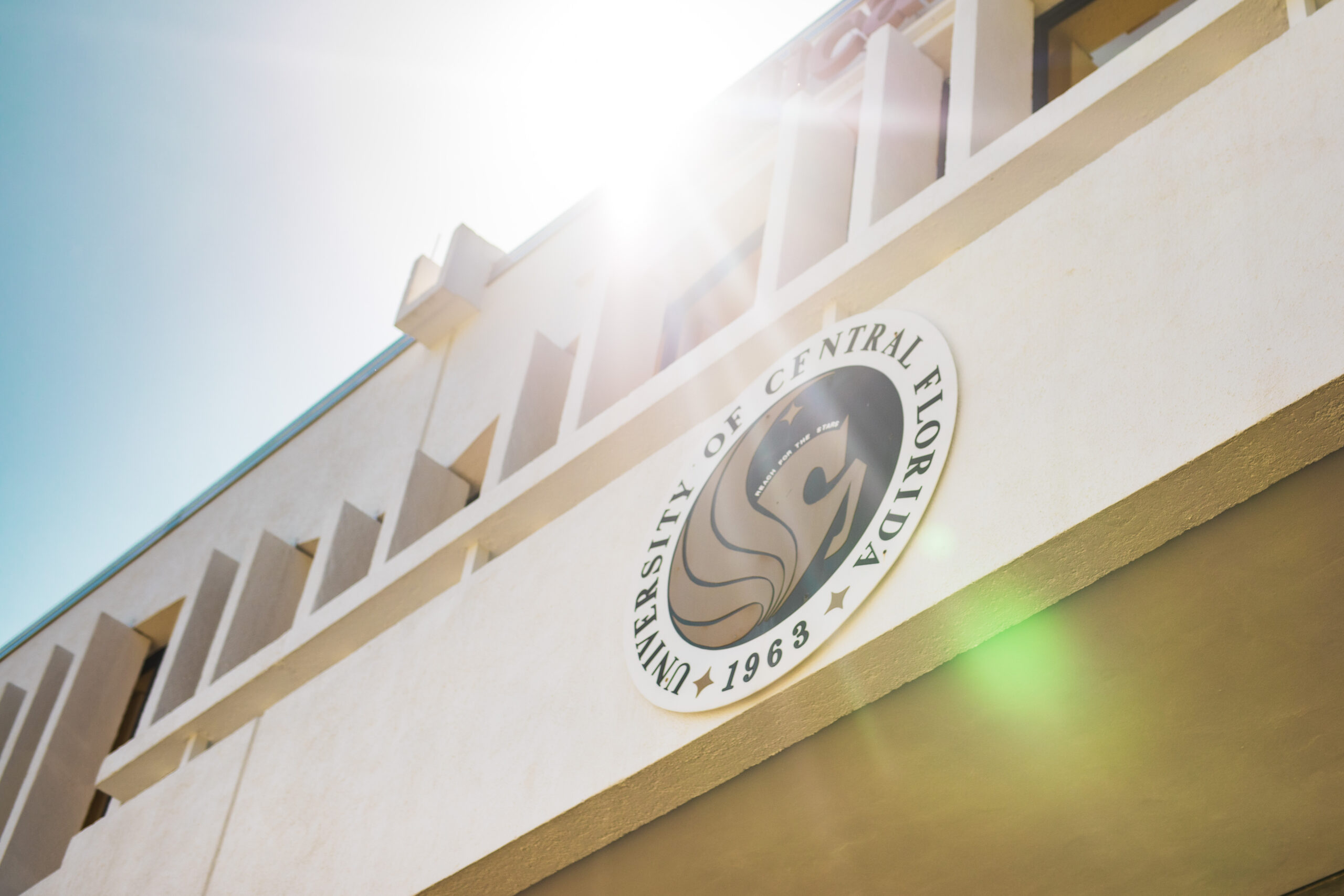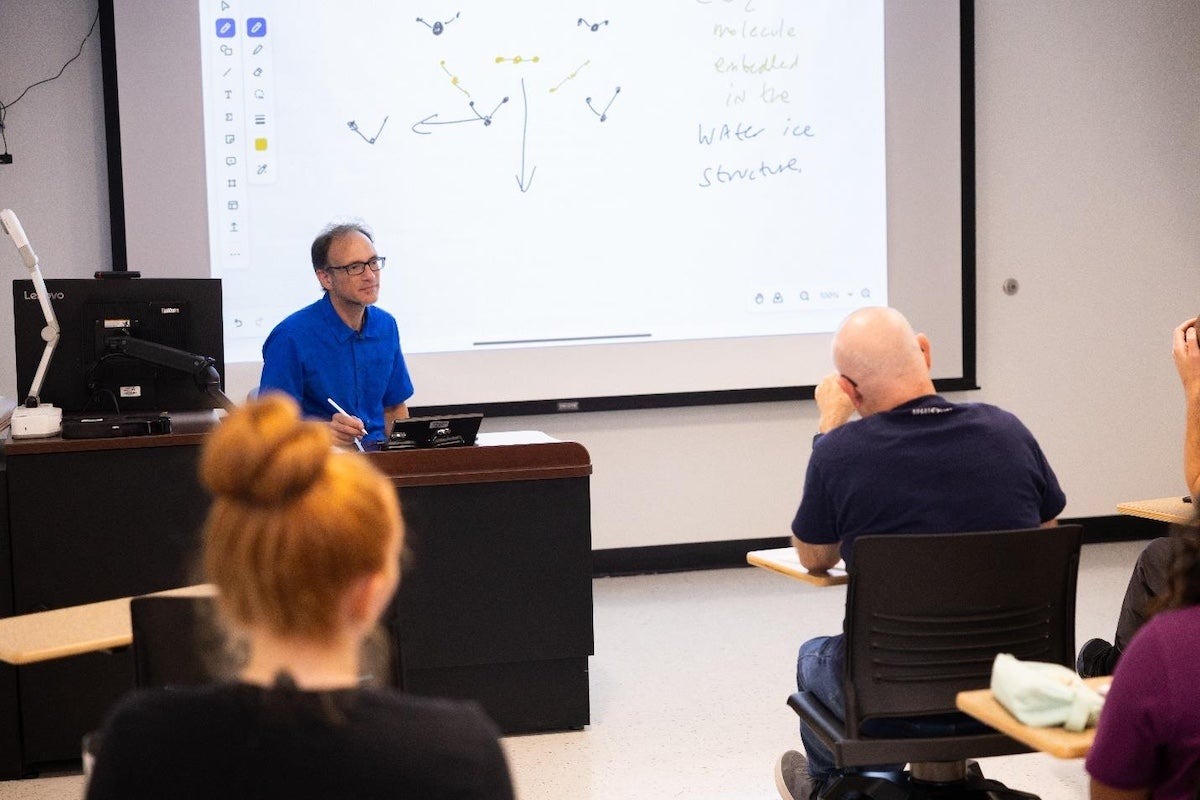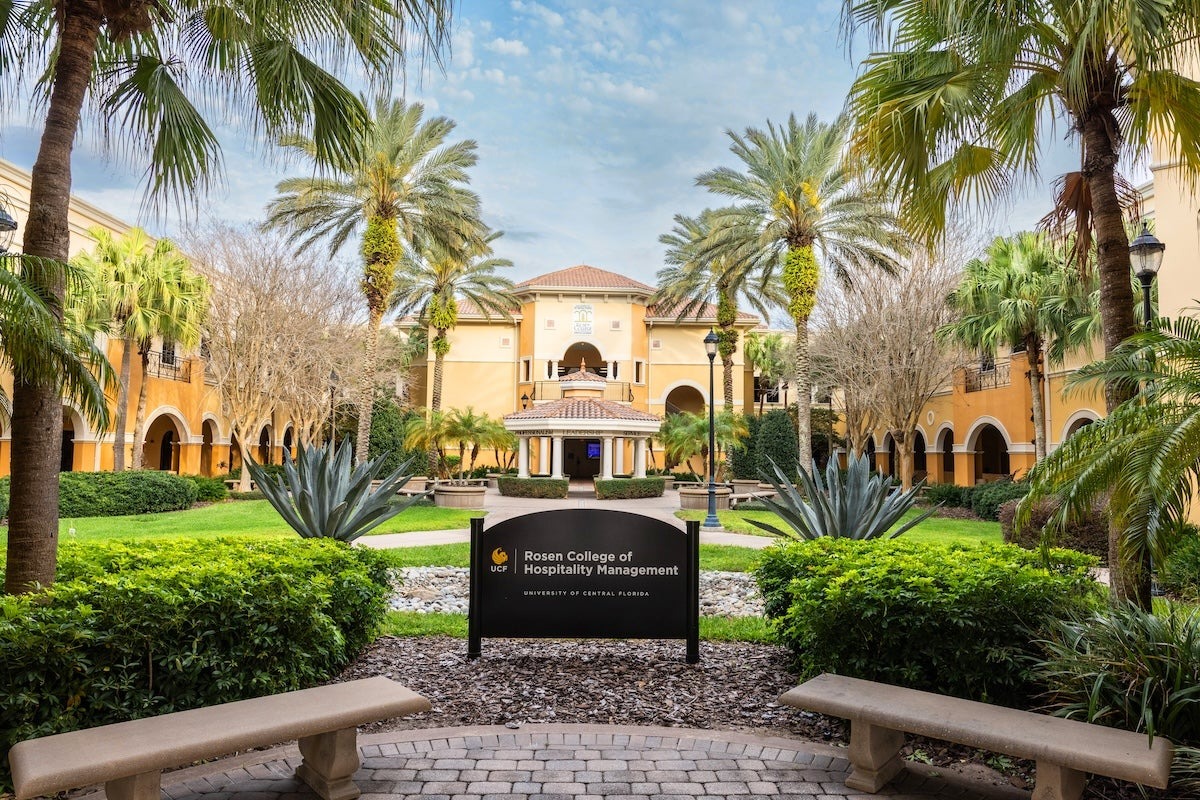Sea Turtle Nesting Season in Full Swing, UCF Researchers Keep Working Despite COVID-19
While uncertainty reigns for Floridians due to COVID-19, there’s one thing they can count on: sea turtles are nesting on our local beaches as nesting season heads into its fourth month this June.
More than 2,850 sea turtle nests have already been discovered along the 29 miles of Brevard County beaches surveyed by UCF, and it is still early in the nesting season, which concludes in October.
“We are seeing some great nesting numbers so far, but it’s too early in the season to know if the turtles will break any records,” says Erin Seney, an assistant research scientist who works with UCF’s Marine Turtle Research Group. “All three of our primary species started nesting on the early side of their normal arrival window, and we are seeing above-average levels of nesting from leatherbacks and loggerheads already. Abundant food at the turtles’ foraging grounds and a mild winter likely contributed to the early start to the season.”
Despite stay-at-home orders in March and April, the research group has been able to continue monitoring the endangered and threatened sea turtles in East-Central Florida this year under existing federal and county contracts. By making changes to their operations to include social distancing and face masks, the team was granted UCF authorization to continue its daily morning surveys, but its in-water netting operations have been suspended.
Commitment to Sea Turtle Counting
The UCF team, which includes conservation biologists, genetic specialists, and students, has been monitoring nesting on the Brevard County portion of Archie Carr National Wildlife Refuge for nearly 40 years and has monitored other Brevard County beaches for over 30. Beach-based and in-water data generated by the lab are invaluable for conservation efforts and provide UCF students unique hands-on experience, which prepares them for graduate school and jobs.
UCF’s group is the only organization authorized to conduct sea turtle monitoring and nest marking throughout the 13 northern-most miles of the Archie Carr Refuge and the Brevard County Mid and South Reaches under permits from the Florida Fish and Wildlife Conservation Commission. The UCF team also monitors Patrick Air Force Base in conjunction with the U.S. Air Force.
East-Central Florida’s coastline is among the most important nesting areas in the world for loggerhead sea turtles, and it also hosts about one-third of all green turtle nests in the state. The region is at the northern end of a “hotspot” for leatherbacks, which nest on our beaches on a smaller scale. Last year, a record of 15,784 green turtle nests were recorded on the 13 miles of the Carr Refuge monitored by UCF.

Contrary to popular belief, COVID-19 does not draw more turtles to the beach, Seney says. But because the beaches were largely empty early in the season, there may have been fewer nesting turtles disturbed by human activities and artificial lighting, which would have conserved individual females’ energy and reduced disorientations caused by lights.
The team’s work was especially critical this year because Brevard County and the U.S. Army Corps of Engineers were conducting beach renourishment projects. In addition to its daily monitoring surveys, the team was hired to mark nests throughout the county beaches — including every nest in Central Brevard through early May — to keep them out of harm’s way.
Now that the nourishment projects are over, the team is back to its routine monitoring efforts, which include counting nests during daylight hours and marking some, but not all, nests with minimal signage for later determination of how many eggs hatched.
Although currently on hold due to COVID-19, the team usually studies juvenile turtles that return to the area and forage for food in the Indian River Lagoon. The overarching program is aimed at learning more about the biology and health of sea turtles at multiple life stages and finding ways to better preserve the species.
Leave it to the Professionals
The researchers, who travel the beaches daily on ATVs and can be found marking nests and taking counts on clipboards, are well recognized by locals. They count all sea turtle nests and false crawls (non-nesting emergences) for each species, mark nests for future assessment, and, in currently limited night operations on the Carr Refuge, measure and tag sea turtles they observe. They also keep close track of each species as they arrive on the nesting beach throughout the season. Leatherbacks arrive first, then loggerheads, and last are the greens.
“We are really grateful for the local support,” Seney says. “But we want to caution some of our local sea turtle enthusiasts. We have had a recent surge in well-meaning beach-goers marking nests on their own. We’re guessing folks who had seen all of the nests marked in April through early May think we have missed nests. Now that the beach nourishment is over, we are not marking most of the nests and no longer using any flagging tape.”
The team counts between 20,000 to 35,000 nests in the 29-mile survey area each year, and only mark a small subsample of those under the monitoring permits.
“The beach would likely be impassable, both for nesting turtles and beach-goers, if we were to mark them all, but our crew is counting nests daily,” Seney says.
Kate Mansfield, a UCF associate professor of biology and director of the UCF Marine Turtle Research Group, says there are other reasons to avoid the nests.
“It is also possible that an untrained, but a well-meaning person could accidentally harm a clutch with a misplaced stake or nest marker,” she says.
All sea turtles in the U.S. are protected under the Endangered Species Act. Touching sea turtles or tampering with their nests without a monitoring or research permit is against federal and state law and can result in fines and potentially jail time.
“We encourage people to learn about the sea turtles through a variety of non-profit groups in the area, and they can follow our work via our Facebook page and other social media,” Seney says. “We post often, and we provide weekly nests counts for our section of the densely-nested Carr Refuge.”
- Social Media Accounts to Follow
- Facebook: @ucfmtrg
- Instagram: @UCFTurtleLab
- Twitter: @UCFTurtleLab; @erin_seney
As of 22 May, UCF’s nest count for the Brevard County Portion of the Archie Carr Refuge (13 miles) was:
- Loggerhead: 2,044
- Leatherback: 29
- Green: 8
Share This Article

UCF Women’s Club Honors 3 Graduate Students with Prestigious Sheila B. Somerville Scholarship
Financial support is often the cornerstone of academic success, and for many students, scholarships open the door to higher education. Beyond easing financial stress, these awards provide recognition, motivation, and a...
Latest News

UCF Launches 1st Planetary and Space Sciences PhD Program in Florida
As SpaceU, UCF is pushing the boundaries of exploration by launching a groundbreaking new doctoral program in the planetary and space sciences. Now, aspiring researchers can apply to the inaugural cohort of...

UCF Fulbright Awardees Bring Their Passions to a Global Scale
Each year, the Fulbright Program offers opportunities for American students to conduct research, teach English, or pursue graduate study abroad. One of the most prestigious international exchange programs in the...

Unleash Opportunities with a UCF Graduate Degree
A graduate degree has the power to unleash opportunities by expanding careers, opening doors to new fields, and increasing lifetime earnings. According to the U.S. Bureau of Labor Statistics (2024),...

UCF Rosen College Ranks No. 1 in the World for Hospitality Education for 2025
One of the most anticipated theme parks in the world is about to open its gates — and right next door, the No. 1 hospitality and hotel management school on...